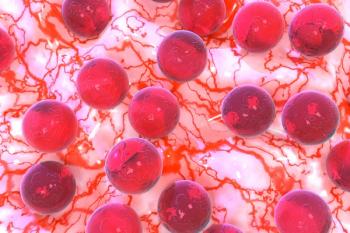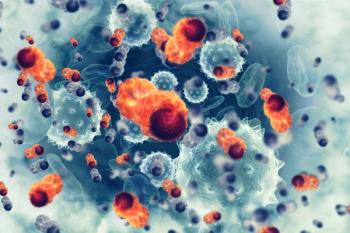
Matthew Krebs, MB, PhD, Reviews the Next Steps for Subcutaneous Amivantamab in Solid Tumors
Matthew Krebs, MB, PhD, spoke about how subcutaneous amivantamab can best be utilized in future clinical trials.
CancerNetwork® spoke with Matthew Krebs, MB, PhD, clinical senior lecturer in Experimental Cancer Medicine at the University of Manchester and Honorary Consultant in Medical Oncology at the Christie Hospital in the United Kingdom, during the
Transcript:
The next steps are to go up on the dosing [of amivantamab] that we’re giving subcutaneously. The pharmacokinetic data from this study, which was also a primary end point, showed that the maximum concentration was achieved in 2 to 3 days. We did get a higher exposure when we co-administered with the recombinant human PH20, as we might have expected. We’ve now decided that we will move forward with the coformulation with the recombinant human PH20, and the higher concentration of the drug because we can administer that in just a few minutes.
It’s quite an easy treatment to deliver, we can do it manually, and it’s safe. The pharmacokinetic data also showed us that the exposure we keep getting with the subcutaneous administration…is only 65% of the intravenous dosing, which you might expect. The next step would be to go to the next cohort of patients and treat the subcutaneous dosing at a higher level. We’re trying to get the exposure [similar to] that of the intravenous dose. We’ll also want to collect ongoing data as to infusion-related reactions as we go up on that dose, and to make sure it remains safe to administer the full dose on site on day 1.
These are very promising preliminary results, but it’s only in 33 patients so far. We’re very excited about the potential for this drug to be given subcutaneously. It will certainly help in the clinic if we can shorten that infusion time as we look to having less infusion-related reactions. It is a very positive step forward for the program. We look forward to ongoing data as we take this further.
Reference
Krebs MG, Johnson ML, Cho BC, et al. Subcutaneous delivery of amivantamab in patients with advanced solid malignancies: Initial safety and pharmacokinetic results from the PALOMA study. Presented at the American Association for Cancer Research 2022 Annual Meeting. New Orleans, LA. April 8-13, 2022. Abstract CT198 / 23.
Newsletter
Stay up to date on recent advances in the multidisciplinary approach to cancer.


















































































